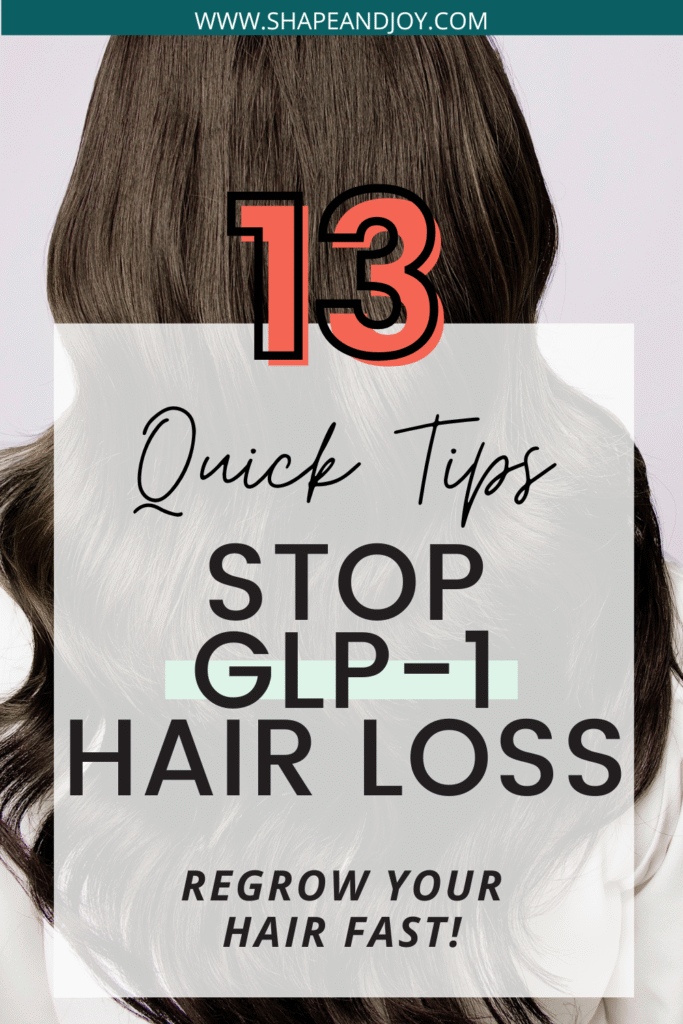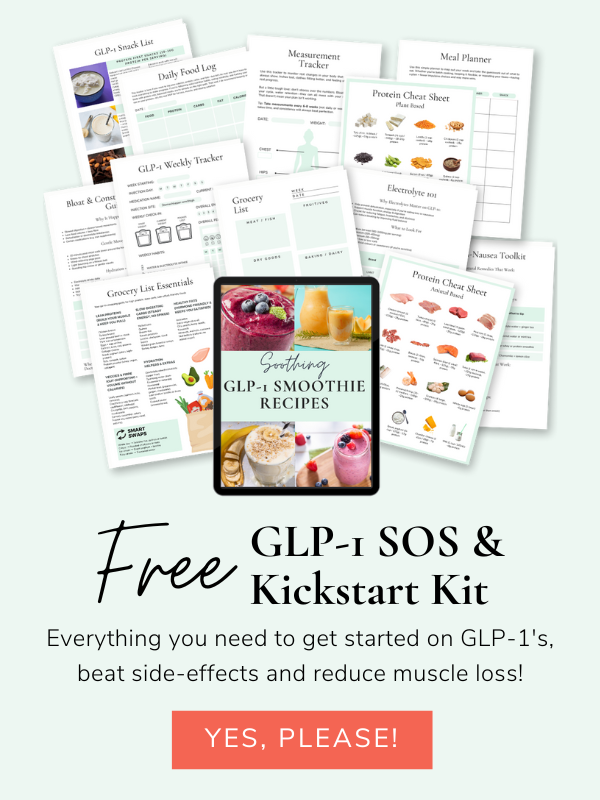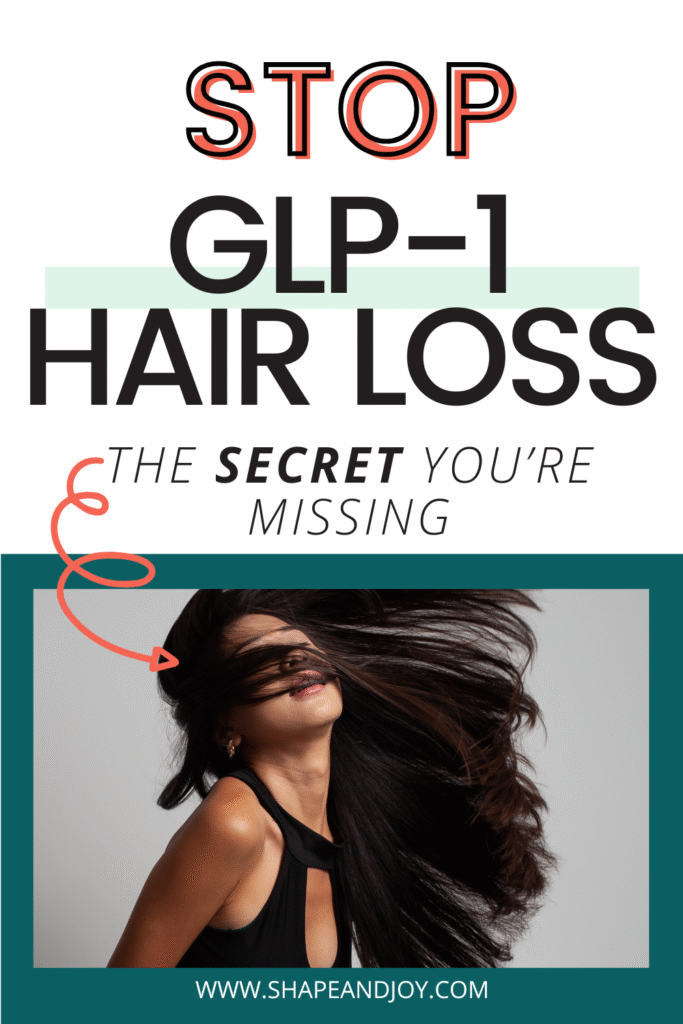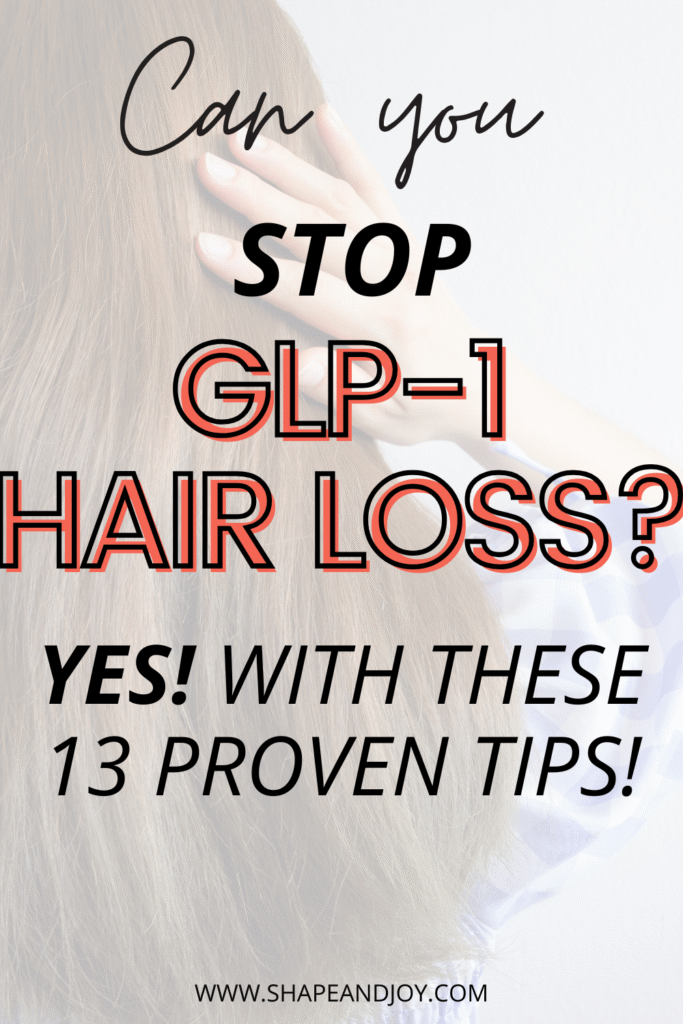The Ultimate GLP-1 Side Effects Survival Guide

Starting GLP-1 medications like Wegovy, Mounjaro, or Zepbound can feel like unlocking a fat-loss cheat code—but what no one tells you? The GLP-1 side effects can seriously knock the wind out of your sails. From nausea and bloating to dehydration and even hair loss, it’s easy to wonder, “Is this normal… and do I really have to put up with it?”
Short answer? Nope.
This survival guide gives you real, practical solutions to the most common GLP-1 side effects—so you can feel good while you lose weight, not just look good. Each section below introduces a key post in the series. Think of it like your relief roadmap. Let’s go.
1. GLP-1 Nausea Relief: Easy Tips to Calm Your Stomach
For when even the smell of toast turns your stomach.
This post tackles one of the most frustrating GLP-1 side effects: nausea. You’ll get tried-and-tested fixes to ease queasiness fast, including hydration strategies, anti-nausea drinks, and when to ask your doctor for help.
You’ll learn:
- Why nausea hits so hard at first.
- How to time meals and snacks to prevent it.
- What to drink, eat, or avoid when your stomach’s a mess.
Go to Post: GLP-1 Nausea Relief: Easy Tips to Calm Your Stomach
2. GLP-1 Bloating and Gas: How to Beat That Uncomfortable Fullness
For when your leggings feel tight—after three bites.
Bloating is one of those sneaky GLP-1 side effects that’s easy to ignore… until it’s all you can think about.
This post shares the best foods to avoid, gentle teas that help, and smart swaps to ease that heavy, gassy feeling.
You’ll learn:
- Why bloating happens on semaglutide or tirzepatide.
- Which foods and habits make it worse (and better).
- Fast fixes that work without wrecking your appetite.
Go to Post: GLP-1 Bloating and Gas: How to Beat That Uncomfortable Fullness
3. GLP-1 Constipation Relief: How to Stay Regular Without Feeling Miserable
For when the scale’s stuck—and so are you.
Constipation is a common but under-discussed GLP-1 side effect. This post dives into how to stay regular with fibre, fluid, movement, and supplements that don’t cause worse problems later.
You’ll learn:
- The best high-fibre foods for sensitive tummies.
- When (and how) to add magnesium or other support.
- Daily habits that get things moving again.
Go to Post: GLP-1 Constipation Relief: How to Stay Regular Without Feeling Miserable
4. GLP-1 Fatigue Fix: Get Your Energy Back
For when you’re losing weight—but also the will to get off the sofa.
GLP-1 medications can zap your energy if you’re not fuelling properly. This post explains why, and gives you practical ways to fight fatigue so you can actually feel alive while shedding fat.
You’ll learn:
- Smart ways to eat when your appetite is low.
- Nutrients that help restore energy levels.
- Daily tips to fight exhaustion without overdoing caffeine.
Go to Post: GLP-1 Fatigue Fix: Get Your Energy Back
5. GLP-1 Dizziness and Lightheadedness: Why It Happens and What to Do
For when you stand up and the room spins.
Feeling dizzy? You’re not alone. This post covers one of the most surprising GLP-1 side effects—and gives you quick, science-backed solutions, especially around hydration and electrolyte balance.
You’ll learn:
- Why dizziness happens more often than you’d think.
- The exact hydration strategy that helps prevent it.
- Key signs it’s time to get checked out.
Go to Post: GLP-1 Dizziness and Lightheadedness: Why It Happens and What to Do

6. GLP-1 Acid Reflux and Heartburn: Stop the Burn
For when every bite leaves you burning.
Some people find their GLP-1 injections trigger heartburn and reflux. This post helps you understand why it happens and how to soothe your symptoms with smart food swaps and lifestyle tweaks.
You’ll learn:
- The biggest reflux triggers and how to avoid them.
- Natural remedies that work fast.
- When to talk to your provider about meds.
Go to Post: GLP-1 Acid Reflux and Heartburn: Stop the Burn
7. GLP-1 Dry Mouth and Dehydration: Stay Refreshed and Hydrated
For when no amount of water is enough.
Dry mouth might seem like a small issue, but it’s one of those GLP-1 side effects that sneaks up fast—and can signal bigger hydration problems.
This post shares the best electrolyte drinks, hydration strategies, and mouth-moisturising tips that actually help.
You’ll learn:
- Why water alone might not cut it.
- Electrolyte tricks that reduce dizziness and fatigue.
- What to sip, suck, or spritz to soothe dry mouth.
Go to Post: GLP-1 Dry Mouth and Dehydration: Stay Refreshed and Hydrated
8. GLP-1 Hair Loss Prevention: 9 Essential Tips to Keep Your Hair Healthy
For when the hairbrush becomes your worst enemy.
Weight loss can sometimes lead to hair shedding—but with the added stress and appetite suppression of GLP-1s, the risk goes up. This post covers how to protect your hair with the right nutrients, habits, and products.
You’ll learn:
- Common deficiencies that fuel hair loss.
- The truth about protein, collagen, and biotin.
- How to protect your hair from the inside out.
Go to Post: GLP-1 Hair Loss Prevention: 9 Essential Tips to Keep Your Hair Healthy
Your GLP-1 Game Plan Starts Here
Feeling a bit lost on your GLP-1 journey? Whether you’re just starting out or deep into your dose increases, the GLP-1 Success Blueprint is your practical, no-fluff guide to navigating weight loss meds like Mounjaro, Zepbound, or Wegovy with confidence.
This isn’t another generic ebook. It’s a full toolkit designed to help you feel strong, informed, and in control, without the overwhelm.

Inside, you’ll get:
- GLP-1 Meds 101: Understand how they work, what to expect, and how each med compares (minus the jargon)
- Nutrition Guidance: Learn how to eat for fat loss and muscle retention, even when your appetite is low
- Workout Support: Discover the best ways to move your body without burning out
- 6-Week Action Plan: Simple daily steps and healthy habit examples to follow at your pace
- Mindset & Motivation Tips: Stay consistent even when your drive dips
- Red Flag Checklist: Know what’s normal, what’s not, and when to seek support
- Bonus: Myths & FAQs – Bust the most common GLP-1 myths and get real answers
Digital download only – use it on your phone, tablet, or print it out to keep by your side.
Ready to ditch the guesswork and actually feel good on your meds?
Conclusion: You’re Not Imagining It—But You’re Also Not Powerless
GLP-1 side effects are real—but so is your ability to manage them. You don’t need to “just deal with it” or wonder if it’s all in your head.
Whether it’s nausea, fatigue, or something more subtle like dehydration, you deserve real solutions that help you stay on track and feel your best.
Because weight loss shouldn’t come at the cost of your quality of life.
📌 Pin this for later! ⬇














